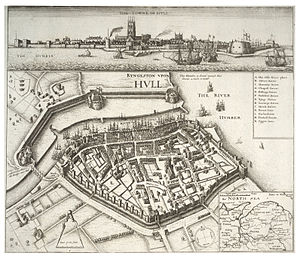Like I suspect very many people I have spent much of my waking time since Thursday lunchtime following news and developments on television and the internet. There does not seem to have been time to write about all one has seen and thought.
Here are a series of reflections on these past few days, what we have witnessed and what they perhaps signify.
The television coverage on BBC has been, I think excellent, and enabled one to both follow events and also watch interesting background material about the last seventy years. One legacy of those seven decades is indeed the ways in which events can now be covered and transmitted to phones and iPads and allowing a far greater range of angles than could have ever been thought - possibly imagined -at the time of the immensely significant broadcast of the Coronation in 1953. This past few days this has meant one could thereby participate in a whole range of events that would otherwise would not be visible. In this media-obsessed age this is important, and monarchies have always understood the importance, the potency of images.
As I wrote to a US friend who sent her condolences to me I had sensed that the reign was drawing to a close and that Her Majesty was frail. To some extent that was an unspoken undercurrent to the Platinum Jubilee. Nonetheless I thought she might still live a while longer. On Tuesday of last week we saw images of her exercising her responsibility of appointing a new Prime Minister and despite the report of the postponed Privy Council on Wednesday evening the news of medical concern about her health fairly rapidly led to a heightened mood of concern and the realisation that this was indeed serious, very serious. An event one realised would happen fairly soon appeared to be upon the nation and Commonwealth. The heavy rain and then the rainbow just before the announcement of the Queen’s death seemed that nature was reflecting what was happening. That is an ancient idea with the death of monarchs as evidenced by Shakespeare in Henry IV pt II, or the idea in 1553 that the thunderstorm which accompanied the death of King Edward VI was his father’s rage at the death of that so long desired male heir.
If the death of the Queen was unexpected in its timing yet expected in a foreseeable future it is also the disappearance from the life of this, and her other realm, from the Commonwealth and indeed the world of a person who has been there as long as one could remember. I was born six months before she succeeded to the throne but I obviously have no memory of King George VI. My earliest dateable memory is of just after the Coronation and my father brining home a commemorative mug driven by the local council to the schoolchildren and, if requested by parents, pre-school children. One of the first books I recall was a splendid Coronation souvenir volume from probably Pitkin that my mother brought out to cheer me up when recovering from childhood illnesses. As some said at the time of the Platinum Jubilee for those of us of that generation beyond our own families and neighbours the Queen was one of the first people we knew of.
The tributes from so many people to her stress duty, fidelity, constancy, and stability. To that are added vignettes of her energetic enquiring attitude when meeting people, her dry humour and robust common sense - occasionally caught also on the films about her working life as monarch, but more often dependent upon a narrator’s memory. It was always slightly surprising when one saw film of her engaging in animated conversation and revealing her enthusiasm for equine matters in contrast to her more reserved appearance on so many public appearances. There is great consistency in the memories of her shared by so many people.
What emerges in the mosaic of memories, the subtle texture of a richly woven tapestry, is a probably naturally rather shy woman who found herself in a unique situation and, as she remarked, had no real time to learn the task of kingship before it was thrust upon her. A stern sense of duty, derived from her mother fromand grandmother Queen Mary, a policy of following in her father’s footsteps, a fidelity to the institution she incarnated and to the peoples given into her care steered her successfully for over seventy years. No mean achievement.
Some commentators have pointed out that in 1952 women very rarely occupied high profile positions in public life - along with Queen Juliana in the Netherlands she was placed at the head of the country, the Empire, the Commonwealth. In one way that was an advantage, a young glamorous Queen could catch the imagination of her people, but it must have taken a toll on her life and that of Prince Philip and their elder children - little privacy to raise a family.
Much of what the monarch does is of course hidden from the public eye, and the public persona hiding the real individual. The themes discussed by Kantorowicz in The King’s Two Bodies were ones Queen Elizabeth II understood and skilfully negotiated.
Hers was a remarkable life, a life well lived, grounded in tradition but open to and often welcoming present realities. In an interview at the time of the Platinum Jubilee the King of Jordan emphasised her moral authority as one of Queen Elizabeth’s great qualities and contributions. That has unfortunately not been emphasised as much in current commentary as the emphasis on her deep personal religious faith. The two go together - the woman of faith became in consequence a moral force for good in the governance and welfare of her realms.
The great strength offered by our tradition of constitutional monarchy of stability and continuity with a recognised successor has been superbly demonstrated, so much so that it takes time to realise that we shall not see again the familiar figure of Queen Elizabeth II at state events or speaking to us in her Christmas broadcast, or enjoying a race meeting. Much of the public grief, the need for many to express that by travelling to royal residences and laying flowers is not just a tribute to her as monarch but a way of dealing with that dawning sense of personal loss.
The variety of that sense reflects the innumerable ways in which we as a nation engaged with the Queen, and she with us. The mourning is therefore personal as well as institutional, reflecting our own lives in hers and that of the realm.
I have always admired our new King, and said so in those years when too many people were quick to criticise or denigrate him. Happily that time is well past, and the response to him and his splendid Queen is positive and warm. That is no inconsiderable achievement in itself. It bodes well for the future.
His addresses have been widely praised and are very much in the style he has developed over his years as heir apparent - distinctively personal, thoughtful, elegant and displaying a sense of place and history.
The first ever broadcasting of the Accession Council was very interesting from historical and constitutional points of view. What one saw emphasised the significance of what was happening - the custody and transfer of authority. The commentary said it originated in the particular circumstances of the accession of King James I in 1603. This seems likely but fifty years earlier the attempt to put Queen Jane on the throne seems to have involved a Council meeting at which, complete with dramatic swoons, she accepted the Crown under King Edward VI’s will in a meeting of the Privy Council. The involvement of the City of London is far older, going back it would appear to the involvement of representatives of London in the accession of King Edmund II in 1016 - another reminder of the long continuities of our system.
The concern of the Orders in Council with the various seals might seem arcane but is, of course, actually key to both the continuity and also the legality of government. Today our understanding of the processes of governance might not put such emphasis on the various seals. They were once more obviously important but are still vital to the legal basis of government. I was struck by the reference to the possibility of replacing the Privy Seal. Despite being in the custody of a specific minister it has not been required for use since legislation in 1884 in the reign of Queen Victoria, and the actual seal is still hers, yet it still is there as part of the machinery of government.
The implementation of Operation London Bridge, which has clearly been very well prepared, with both its long established elements and the newer ones of the King travelling to Edinburgh, Belfast and Cardiff has been assured. The particular circumstances of the Queen dying in Scotland has led under Operation Unicorn to the ceremonies in Edinburgh of her resting in state at Holyroodhouse and then St Giles Cathedral. This has been a dignified and very suitable addition - an instance of “the invention of tradition”. It has been both a fitting acknowledgment of the Queen’s love for Scotland but also of the distinctive place of the northern kingdom within the UK. The last time a monarch died in Scotland was 1542 with that of King James V, whose crown rested on his descendant’s coffin in St Giles this week.
One aspect of the ceremonies that I do rather regret is the decision to transfer the Queen’s coffin from Edinburgh to London by plane rather than by train. For all the dignity of the farewell from Edinburgh airport a move by train
would have allowed more people to pay their respects, as the Scots were able to do along the route by road on Sunday from Balmoral. Those scenes and those last night of the journey from RAF Northolt to Buckingham Palace with so many stopping or turning out in the dusk of a wet September evening, and in both instances in striking silence and respect, will be one of the many memories one will take from this past few days. The sheer scale and gravitas of the crowds in London and Edinburgh, the very wide range of ages involved, along the processional routes and at royal residences has been an eloquent, silent, sombre testimony of loyalty and love.



